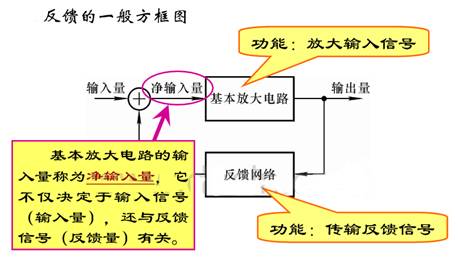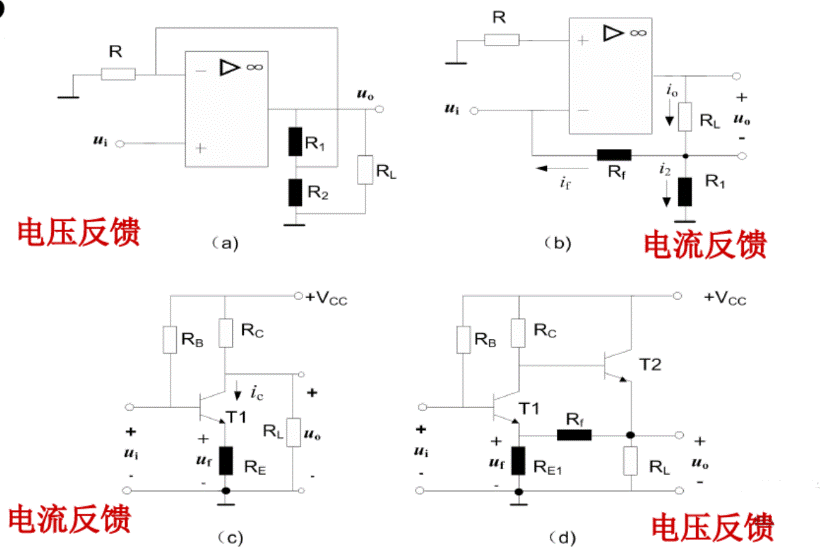How to determine voltage and current feedback
Time:2024-02-04
Views:325
In electronic circuits, the measure (or process) of applying a portion or all of the output (output voltage or output current) through a certain circuit form to the input circuit to affect the input voltage or input current of the input amplification circuit is called feedback.

 The feedback principle of an amplification circuit is to redirect a portion of the output signal back into the input terminal and combine it with the input signal to change the working state and performance of the amplification circuit. The specific principle is as follows:
The feedback principle of an amplification circuit is to redirect a portion of the output signal back into the input terminal and combine it with the input signal to change the working state and performance of the amplification circuit. The specific principle is as follows:
The key to understanding the concept of "feedback" is to pay attention to two points:
(1) A path must be established between the output and input terminals;
(2) After the output is applied back to the input, it must have a certain impact on the input.
A certain circuit form that connects the output end to the input end and has an output quantity that affects the input signal, often referred to as a feedback path.

What are the types of feedback in amplification circuits
There are usually several types of feedback for amplification circuits:
1. Voltage Negative Feedback: This is the most common and commonly used type of feedback. In negative voltage feedback, some output signals are fed back to the input end and subtracted from the input signal to reduce the difference between the output signal and the input signal. This feedback method improves the gain, frequency response, and nonlinear distortion of the amplification circuit, thereby enhancing the stability and performance of the system.
2. Current Negative Feedback: In current negative feedback, a portion of the output current is fed back to the input end and subtracted from the input current. This feedback method can reduce the nonlinear distortion of the amplification circuit and improve the stability and linearity of the voltage gain. Current negative feedback is commonly used in amplification circuits that require high precision and low distortion.
3. Positive Feedback: Positive feedback enhances the phase relationship between the output signal and the input signal. This feedback method can cause the gain of the amplification circuit to become unstable, and even cause oscillations. Therefore, in amplification circuit design, positive feedback is generally avoided and negative feedback is used to stabilize the system.
Although negative feedback is widely used in most amplification circuits, different amplification circuits may require different types of feedback to meet specific requirements.
How to determine voltage and current feedback
Judgment of voltage and current feedback
(1) Definition method
Direct judgment based on voltage and current feedback definitions. When the size of the feedback signal is proportional to the output voltage, it is voltage feedback; Proportional to the output current is called current feedback.
(2) Output short-circuit method
Short circuit the output voltage or set the load R=0. If the feedback signal no longer exists, i.e. X=0, then it is voltage feedback; If the feedback signal still exists, it is current feedback.

Feedback network: Introducing a feedback network into an amplification circuit to feed back a portion of the output signal to the input end. This feedback network can be composed of components such as resistors, capacitors, operational amplifiers, etc. Through a feedback network, the introduced feedback signal is mixed with the input signal.
Error signal: Subtract the mixed feedback signal from the input signal to obtain the difference signal, which is the error signal. The error signal represents the difference between the output signal and the expected signal.
Adjust input signal: Adjust the input signal based on the error signal. By adjusting the amplitude, phase, and other characteristics of the input signal accordingly, the output signal is made closer to the desired signal.
Adjusting the working state: The introduction of feedback signals will affect the working state of the amplification circuit, such as the working point, bias current, etc. By adjusting these working states, the gain, linearity, and other characteristics of the amplification circuit can be changed.
Stability: Feedback systems can help stabilize the operation of amplification circuits. When external factors cause changes in the working point of the amplification circuit, the feedback signal can adjust the output of the amplification circuit accordingly to maintain system stability.
Overall, through the feedback principle, the amplification circuit can self adjust according to the error signal and change its working state to make the output signal closer to the desired signal. Negative feedback can also reduce gain, improve linearity, expand frequency response, and adjust input impedance and output impedance. Therefore, the feedback principle is an important method for designing and optimizing amplification circuits.
|
Disclaimer: This article is transferred from other platforms and does not represent the views and positions of this site. If there is any infringement or objection, please contact us to delete it. thank you! |











